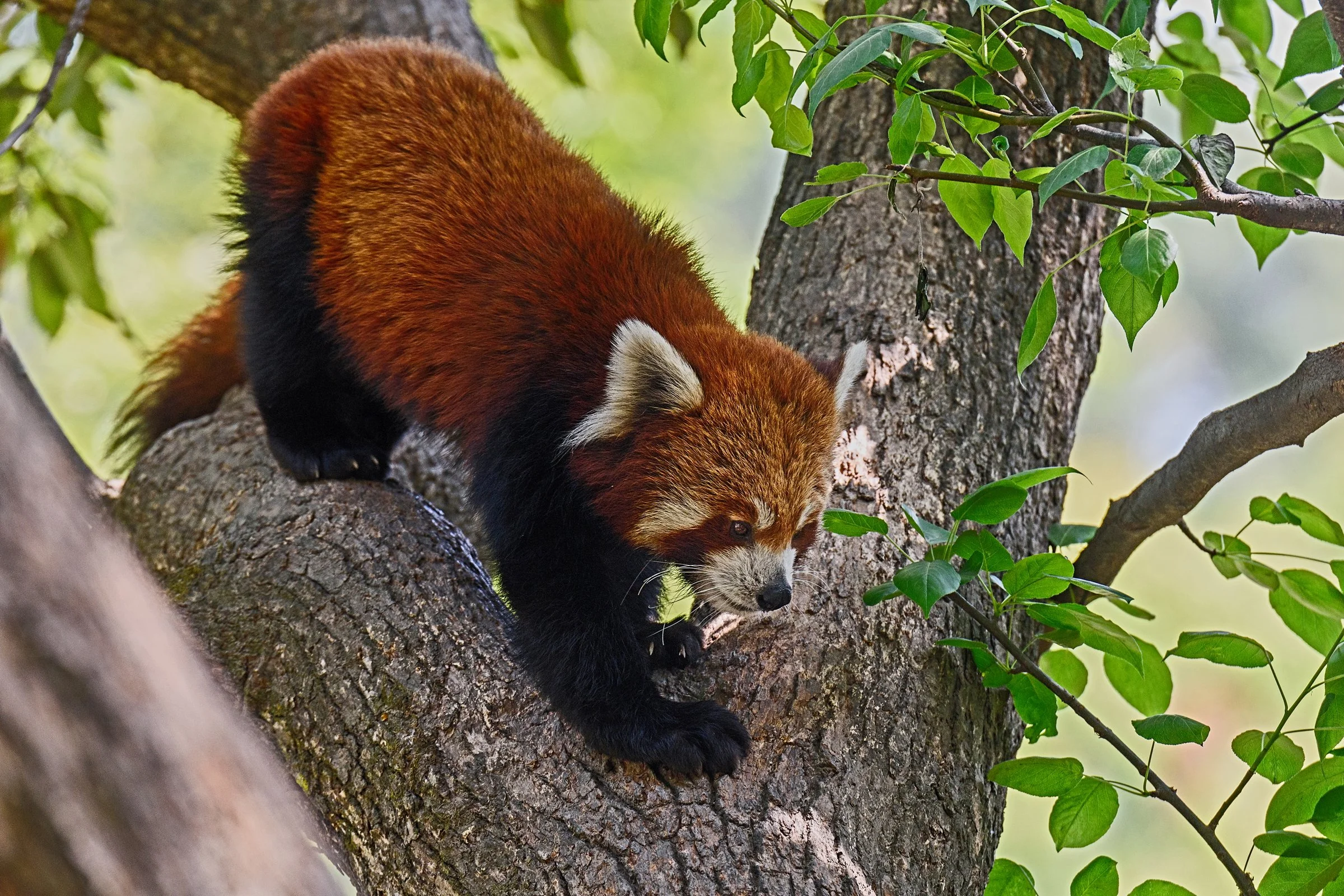
Endangered Species of Nepal
Nepal is home to some of the world’s most threatened species. From the dense jungles of Chitwan and Bardia to the icy ridges of the Himalayas, these animals survive against the pressures of habitat loss, poaching, and climate change. Wildlife photographer Om Prakash Yadav has dedicated years to documenting these species in their natural environments. His fieldwork supports conservation monitoring, educational programs, and research initiatives aimed at ensuring that Nepal’s endangered wildlife continues to thrive for future generations.
The One-Horned Rhinoceros – Symbol of Survival
The greater one-horned rhinoceros is one of Nepal’s greatest conservation success stories. Once near extinction, strong protection measures in Chitwan and Bardia National Parks have revived their numbers. Om Prakash Yadav has documented the rhino’s resilience through images that reveal its calm strength and connection to riverine grasslands. His photography supports awareness campaigns and conservation reports used by national and international organizations. Each frame reflects Nepal’s ongoing effort to balance human expansion with wildlife protection.
The Bengal Tiger – Guardian of the Forest
The Bengal tiger represents both power and fragility. In Nepal, it inhabits the lowland Terai forests, particularly Chitwan, Bardia, and Shuklaphanta. Om’s tiger images are not about power but presence; he captures their stealth, their patterns in light and shadow, and their dependence on healthy prey populations and connected habitats. His field documentation helps highlight the role of anti-poaching patrols, wildlife corridors, and cross-border conservation efforts between Nepal and India.
The Red Panda – The Silent Guardian of the Eastern Hills
In the misty bamboo forests of eastern Nepal lives the elusive red panda, an endangered species often referred to as the “fire fox.” Om Prakash Yadav’s expeditions to the forests of Ilam and Taplejung have resulted in rare photographic documentation of this secretive mammal. His photographs contribute to research and awareness campaigns led by conservation partners working to protect this fragile species from deforestation and climate shifts. The red panda’s survival depends on intact forest corridors, responsible tourism, and continued community-based conservation.
The Snow Leopard – Ghost of the Himalayas
Few creatures embody the mystery of the high Himalayas like the snow leopard. Found in Dolpo, Mustang, and the Annapurna region, it remains one of the most difficult animals to photograph. Om Prakash Yadav has spent weeks in high-altitude conditions documenting its environment, prey patterns, and conservation challenges. His photographs of snow leopard habitats have been used by NGOs and scientific publications to promote transboundary conservation programs in the Himalayas. The snow leopard symbolizes the need for climate adaptation and habitat connectivity in fragile mountain ecosystems.
The Asian Elephant – The Gentle Giant of the Terai
The Asian elephant is among the most intelligent and emotionally complex species found in Nepal. Wild herds roam the forests of Bardia and Koshi Tappu, facing challenges from habitat fragmentation and conflict with expanding human settlements. Om’s field photography captures their family bonds, movements, and interactions with the landscape. His work often accompanies awareness campaigns about elephant conservation and human–wildlife coexistence.
Rare Birds and Lesser-Known Species
Nepal’s biodiversity extends to hundreds of endangered and endemic bird species, including the Bengal florican, Sarus crane, and spiny babbler; Nepal’s only endemic bird. Om Prakash Yadav’s bird photography showcases these avian species in natural light and behavior. His images are used by researchers and NGOs for species identification, publications, and education
Each endangered species tells a story of interconnection — between forest and river, snow and grassland, wildlife and people. Through photography, Om Prakash Yadav continues to document and share these stories to inspire awareness, funding, and protection. His ongoing work supports the vision of a Nepal where development and biodiversity can thrive together.
